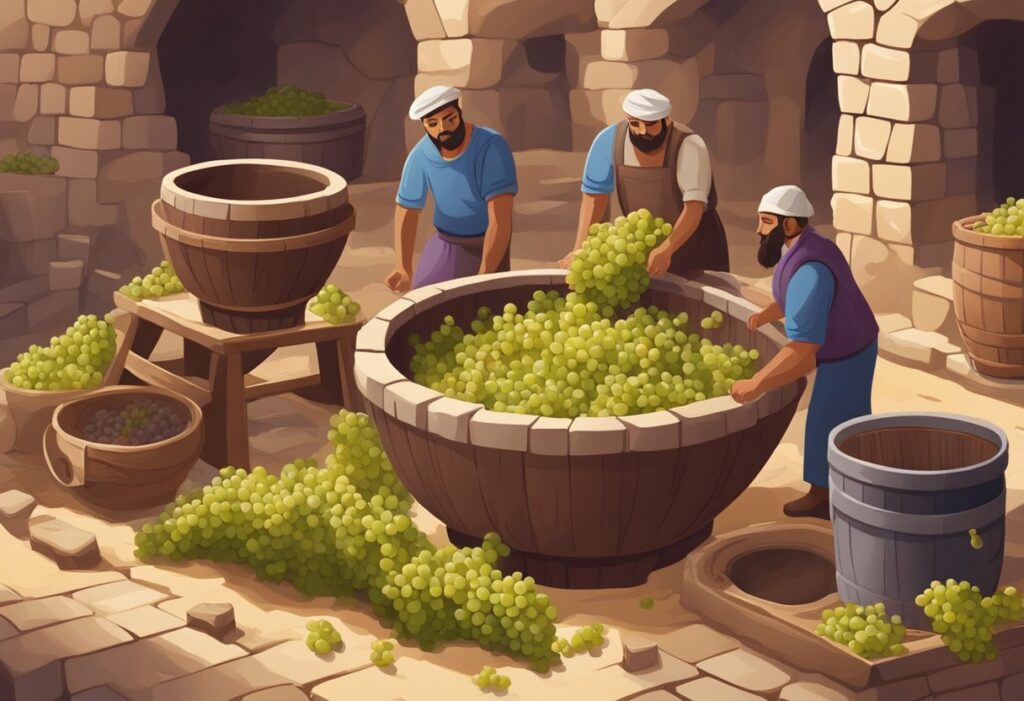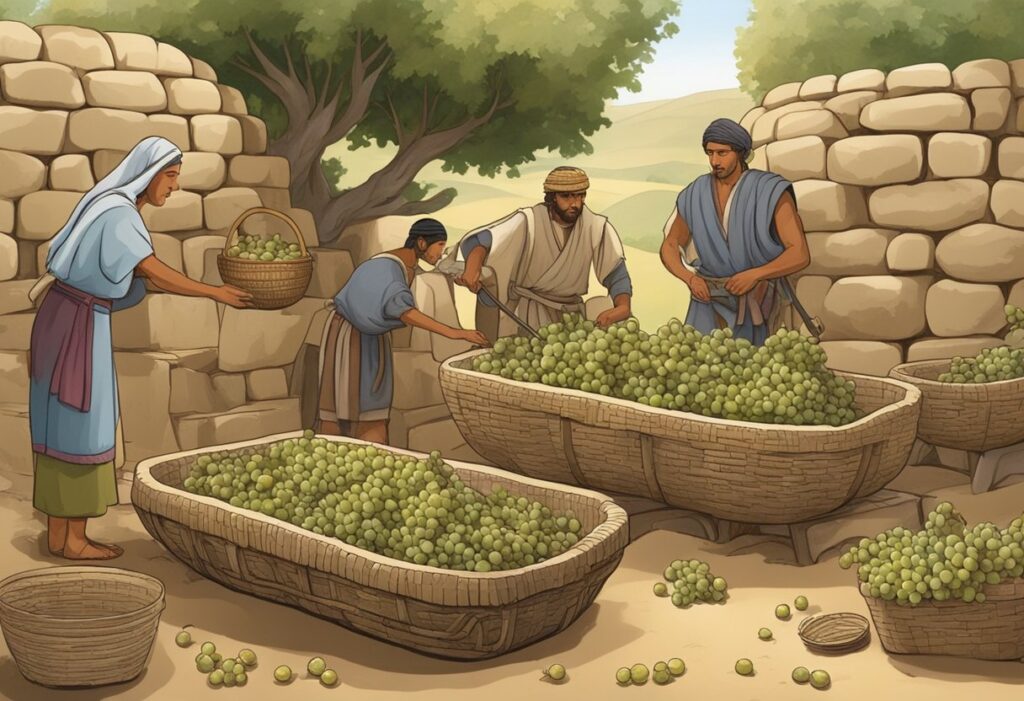Winemaking has a rich history that dates back thousands of years. The journey of wine production began in ancient civilizations like the Sumerians and Babylonians, who used simple techniques such as crushing grapes with their feet and fermenting the juice in clay vessels called amphorae. These early methods laid the foundation for what would become a global tradition.
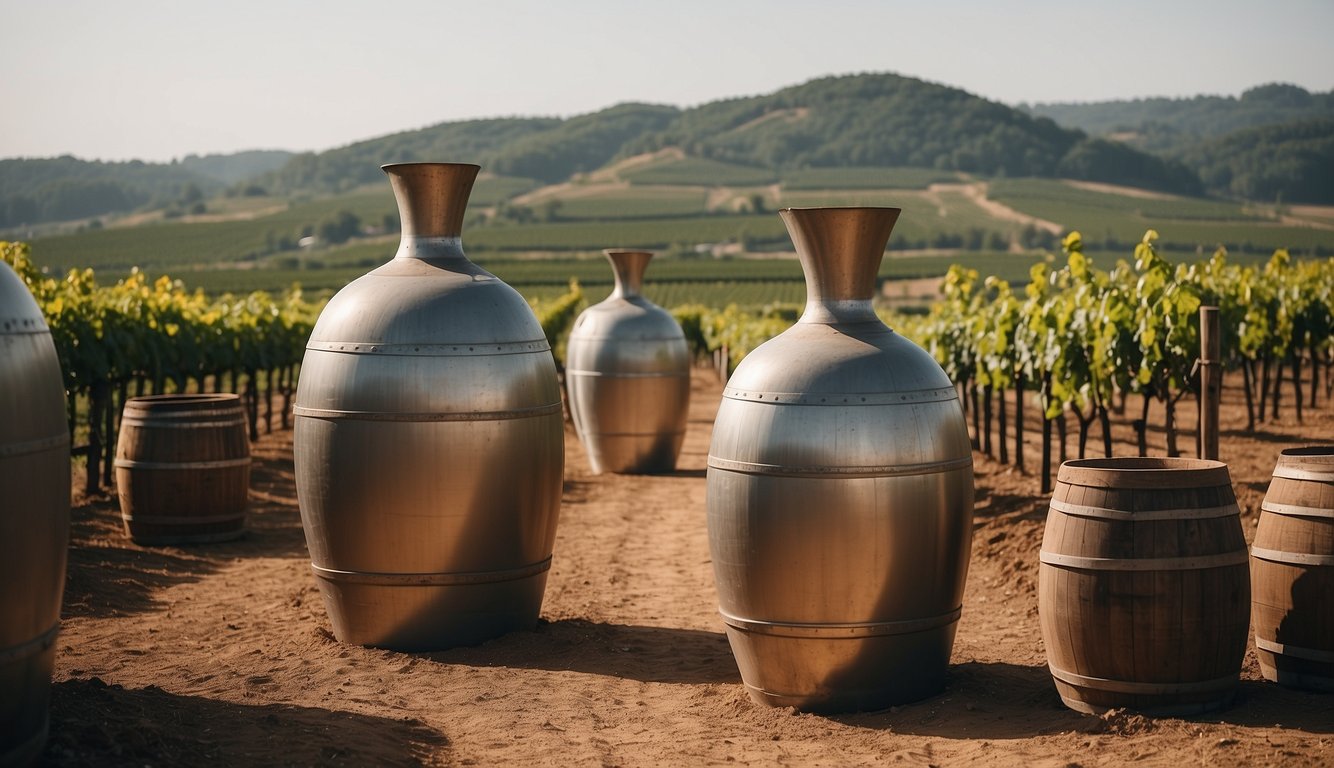
As you explore the evolution of winemaking, you’ll discover how different regions like Armenia, Georgia, and Iran contributed to its development. Ancient artifacts, including grape seeds and winemaking tools, have been found in these areas, providing evidence of early wine production practices. Modern winemaking techniques have vastly improved the quality and stability of wine. Today, technological advancements allow vintners to create cleaner and more stable wines, resulting in a diverse range of styles and flavors.
You will also see how winemaking has transformed from an ancient craft to a sophisticated science. Current methods blend tradition with cutting-edge technology, ensuring that each bottle of wine is a perfect blend of history and innovation. By understanding the past and present of winemaking, you can truly appreciate the rich heritage and future potential of this beloved beverage.
The Origins and History of Winemaking
The history of winemaking is rich and complex, spanning thousands of years and multiple ancient civilizations. From the earliest winemaking practices in the Near East to the intricate techniques developed by the Greeks and Romans, each era has contributed significantly to the evolution of winemaking.
Winemaking in Antiquity
Wine is believed to have originated in the ancient Near East around 6000 BCE. Archaeological evidence, including grape seeds and ancient winemaking tools, points to early wine production in regions like the South Caucasus and the Zagros Mountains.
In Egypt, wine was a staple in many religious ceremonies and royal banquets. The Greeks perfected the art of winemaking, spreading it throughout the Mediterranean. The Romans, inheriting Greek techniques, further refined and expanded wine production across the vast stretches of the Roman Empire.
Ancient Methods and Innovations
Early winemakers employed various techniques to ferment and store wine. The ancient Sumerians and Babylonians, living between the Tigris and Euphrates rivers, crushed grapes with their feet and fermented the juice in large clay vessels known as amphorae. These amphorae were often sealed with clay or pitch to keep the wine from spoiling. The discovery of tartaric acid in ancient ceramics provides evidence of these ancient practices.
The domestication of the Vitis vinifera grape was a significant milestone. Early winemakers selectively bred wild grapevines to create more robust and fruitful strains. The yeast Saccharomyces cerevisiae played a crucial role in this, as it naturally facilitated the fermentation process, turning grape juice into wine.
Cultural Significance of Wine in Ancient Civilizations
Wine held great cultural and social significance in ancient societies. In Mesopotamia, wine was often associated with rituals and deities. The Egyptians used wine in ceremonies honoring their gods, and wine jars were commonly found in pharaohs’ tombs.
In Greece, wine was an integral part of the symposium, a social gathering for intellectual discussion and entertainment. The Romans elevated wine to a symbol of status and luxury, weaving it into their daily life and religious practices. The cultural heritage of these ancient civilizations continues to influence modern winemaking traditions.
From the ancient vineyards of the South Caucasus to the bustling Roman forums, wine has always been a symbol of cultural richness and shared human experience.
Evolution of Viticulture and Grape Cultivation
Grapevine domestication dates back to the Neolithic period, shaping human culture and agriculture. Key developments in grape cultivation and the spread of these techniques transformed winemaking over millennia.
Development of Grapevines and Viticulture
Grapevines are one of the longest-domesticated plant species, with evidence of winemaking from around 6000 BCE in Anatolia. Early viticulture involved selecting favorable grapevines and using ancient techniques for propagation.
Early winemakers would harvest grapes and crush them, often using their feet, to extract grape juice. The juice was then fermented in pottery vessels like pithoi or wine jars. These methods ensured the juice transformed into wine, retaining the tannins and color from the grape skins.
The role of grape seeds and the fruit itself was pivotal. Cultivators paid close attention to the vines, selecting those with desirable traits. This practice was essential in spreading viticulture across regions such as the Mediterranean, where honey was sometimes added to sweeten the wine.
Spread and Dissemination of Grape Cultivation
Grape cultivation techniques spread significantly from Western Asia and the Caucasus. As people migrated and traded, they took their viticulture knowledge with them. The wine trade played a crucial role in this dissemination, contributing to the spread of grapevines throughout the Near East and Europe.
In ancient Rome, grape cultivation techniques became more refined. Romans implemented more advanced methods, such as trellising, to improve grape growth. Pottery from the period, often filled with grape juice and wine, reveals extensive viticultural knowledge. The cultivation techniques continued to evolve over centuries, adapting to different climates and terrains.
By the mid-1800s, places like California emerged as significant wine producers. Modern technology and scientific advancements further revolutionized viticulture, improving the management of grapes and the quality of the wine produced.
Technological Advancements in Winemaking
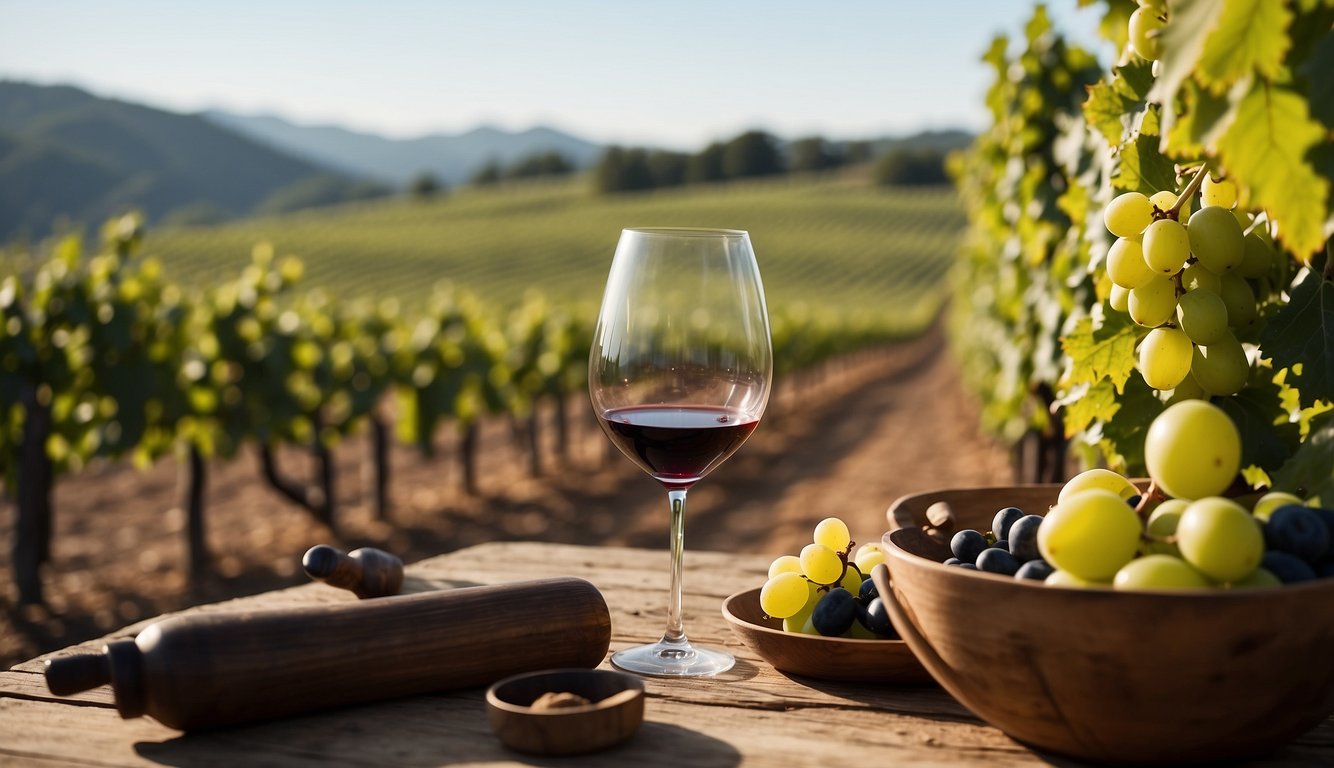
Winemaking has seen remarkable innovations from ancient tools to sophisticated modern equipment. Key advances include the creation and use of wine presses, discoveries in fermentation and aging processes, and the development of modern winemaking technologies.
The Emergence of Wine Presses and Storage
Early winemakers used simple tools for treading grapes and extracting juice. The invention of the wine press, specifically the torcular, revolutionized this process. By applying pressure, it squeezed out more grape juice than foot-stomping methods. This device improved efficiency and yield.
Wine storage also evolved, with winemakers initially using earthenware jars. Eventually, wooden barrels became popular. These barrels not only stored wine but also contributed to its flavor profile through oxidation. This method balanced the oxidative nature of winemaking with the need to keep the wine palatable over long periods.
Discoveries in Fermentation and Aging
Fermentation is the heart of winemaking. The identification of Saccharomyces cerevisiae, a yeast, was pivotal. This yeast drives the conversion of grape sugars into alcohol. Understanding this process allowed winemakers to control fermentation better, leading to more consistent and higher-quality wines.
Aging techniques also saw advancements. Biological aging in wine cellars, especially without oxygen, helped in producing wines with a soft mouthfeel and richer flavors. Reducing astringency and rapid browning were significant challenges that these techniques addressed. The development of yeast films or yeast pellicles during aging was key in crafting aged wines with unique characteristics.
Modern Winemaking Equipment and Techniques
Today’s winemaking harnesses sophisticated equipment to enhance every aspect of production. Modern wine presses are far more precise, allowing gentle extraction methods that preserve flavor and quality. Other equipment includes stainless steel fermenters and temperature control systems, which are crucial for managing the oxidative nature of fermentation.
Blending has become an art form, aided by technology to combine different wine lots for the perfect balance. Advanced oenological practices involve the use of additives such as specific herbs and enzymes to refine taste and texture. This blend of tradition and technology ensures that today’s winemaking produces high-quality, distinctive wines that cater to diverse palates.
The Cultural and Economic Impact of Wine
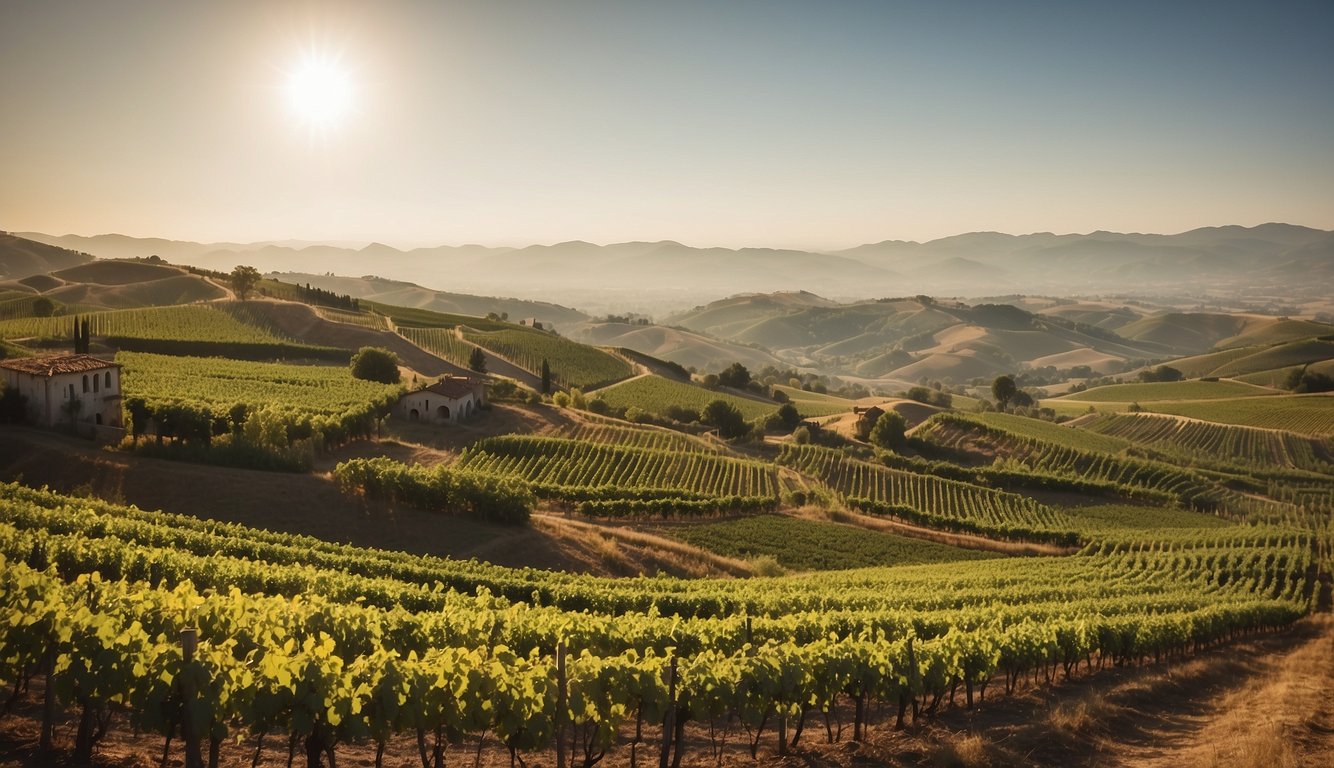
Wine has played a significant role in shaping cultures and economies around the world. It has been a symbol of heritage and transformation for centuries and also an important component of global trade.
Wine as a Symbol of Heritage and Transformation
Wine holds a deep cultural significance in many societies. In ancient Greece, wine was associated with Dionysus, the god of wine, fertility, and festivity. Rituals and ceremonies often included wine to honor deities and mark celebrations.
Over time, wine has come to symbolize cultural heritage and transformation. Cultures in the Mediterranean region, such as Italy and France, take pride in their ancient winemaking techniques and wine styles. These techniques are passed down through generations, preserving historical practices while evolving with modern methods.
In modern times, wine serves as an essential link to history. You can see the revival and dissemination of ancient styles in today’s boutique wineries. Such traditions highlight the ingenuity and passion of wine producers worldwide, ensuring that cultural heritage remains alive.
The Global Wine Market and Trade Dynamics
Today, the global wine market is a massive industry. Wine trade spans continents, connecting producers and consumers across the globe. The demand for quality wines has led to diverse wine styles and an increase in grape cultivation in new regions like China.
Wine trade impacts economies by providing jobs and supporting tourism. Regions known for wine production, such as Napa Valley in the United States and Bordeaux in France, attract millions of visitors annually. This tourism, in combination with the local wine trade, bolsters local economies.
International trade agreements and regulations influence the dynamics of the wine market. For example, tariffs and trade policies can affect the price and accessibility of imported wines, shaping what you find on your local wine shelf. As global trade continues to grow, the interplay between local traditions and international demand will remain a crucial factor in the wine industry.
Innovations in Wine Styles and Preferences
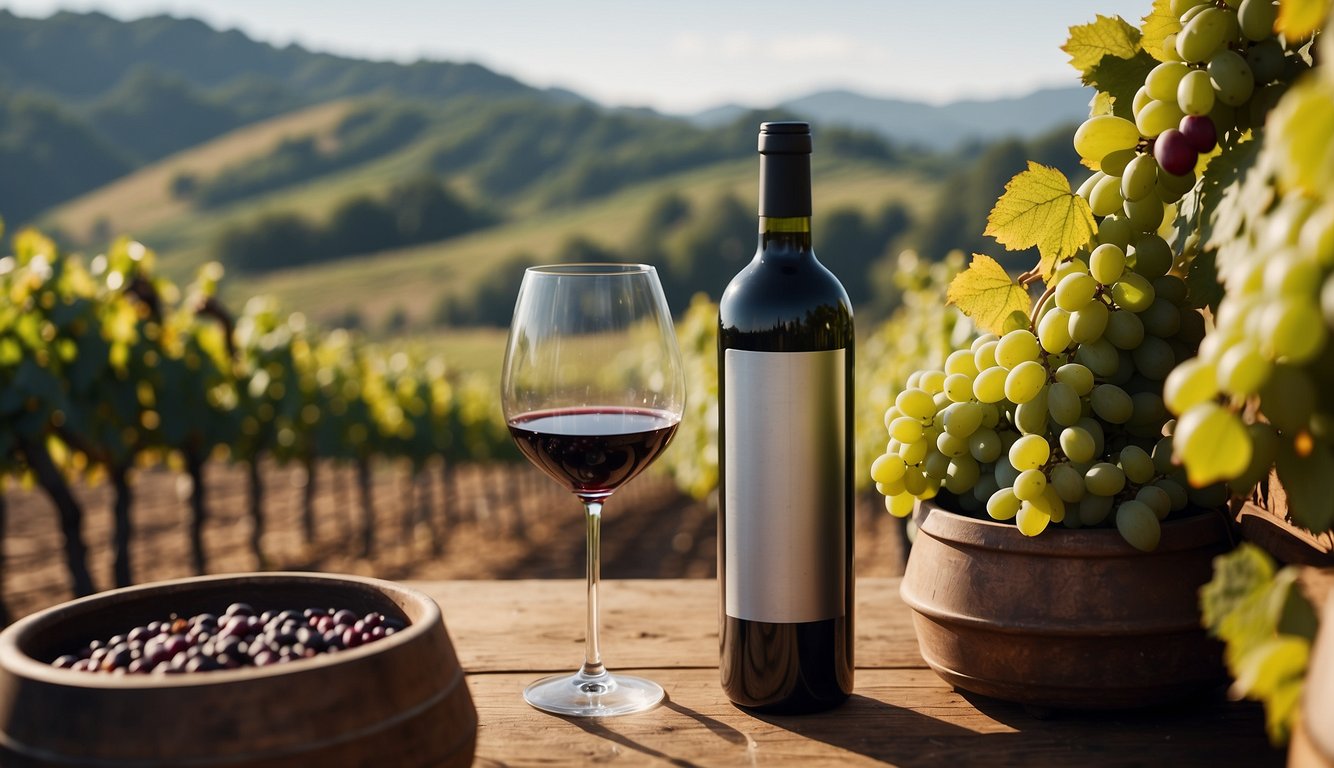
Winemaking has evolved significantly, leading to a surge in sustainable practices, diverse wine flavors, and shifting consumer trends. These innovations have reshaped the wine industry, making it more dynamic and inclusive.
The Rise of Sustainable and Organic Winemaking
The push for sustainable and organic winemaking practices reflects a growing awareness of environmental impact. Sustainable winemaking focuses on reducing waste, conserving water, and using renewable energy sources. This approach helps maintain the land for future generations.
Organic winemaking eliminates synthetic pesticides and fertilizers. Instead, organic growers use natural compost and biological pest control measures. This method leads to healthier vines and more authentic wine flavors.
Many wineries are now adopting biodynamic practices. This holistic approach treats the vineyard as a living ecosystem. By aligning farming activities with lunar cycles and using natural preparations, winemakers aim to enhance vine health and wine quality.
The Diversification of Wine Flavors and Types
Modern winemaking has ushered in a variety of new wine styles and flavors, satisfying diverse consumer palates. Ancient techniques like fermenting in amphorae have made a comeback. Amphorae-fermented wines often have unique textures and earthy flavors.
Sweet wines and flavored wines are gaining popularity. Innovations in fermentation and blending have produced wines with balanced sweetness and novel taste combinations, using fruits, spices, and botanicals.
Oak aging continues to be significant in winemaking. Aging wine in oak barrels can introduce flavors like vanilla, caramel, and toast. Oak can also add to the wine’s complexity and improve its aging potential.
Consumer Trends and the Future of the Wine Industry
Consumer preferences are shifting, with many opting for unique and personalized wine experiences. There’s a growing interest in natural wines, which are made with minimal intervention. These wines are often unfiltered and unfined, offering a genuine expression of the vineyard’s terroir.
Wine tourism is on the rise. Wine enthusiasts enjoy visiting wine cellars and wineries to taste and learn about wine firsthand. This trend is revitalizing local economies and creating a closer connection between consumers and winemakers.
The future of wine also sees a blend of tradition and technology. Advanced viticulture techniques and sustainability efforts are likely to play a crucial role. As the industry evolves, your choices and preferences will continue to shape what’s next in the world of wine.
Stay curious and keep exploring this exciting journey through the evolution of winemaking.
